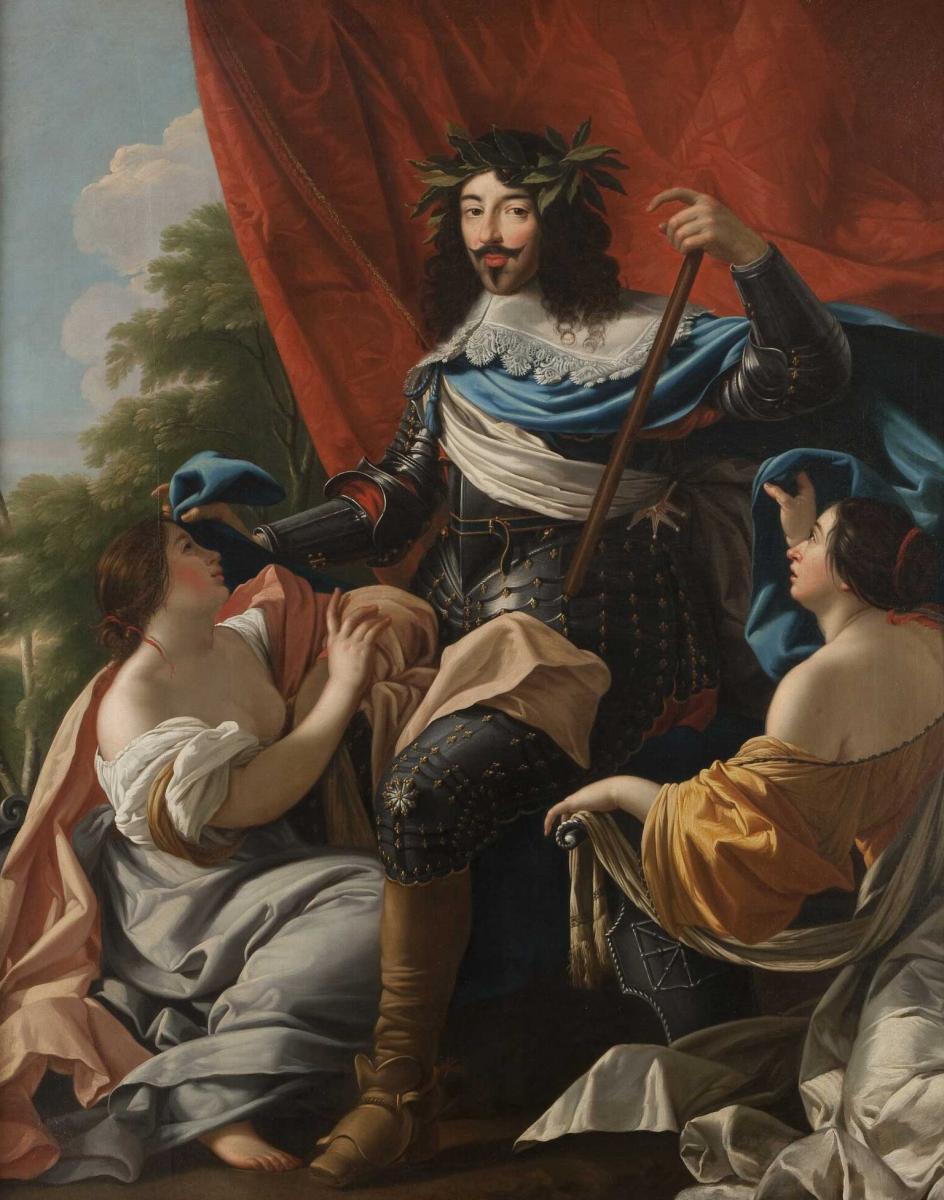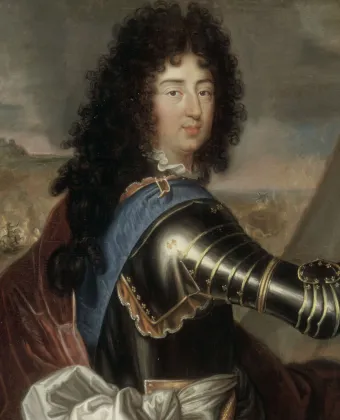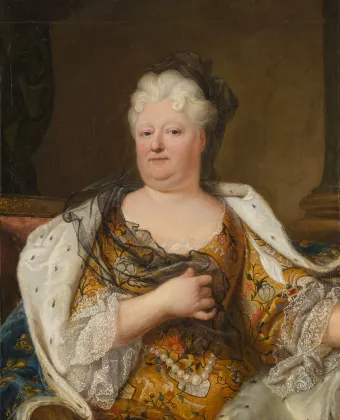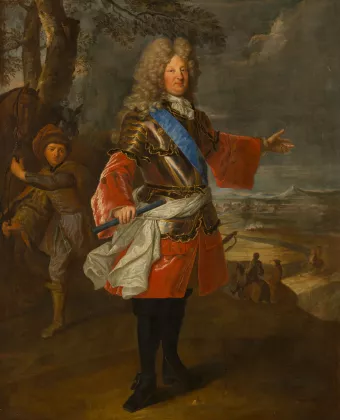The son of Henry IV and Marie de' Medici, Louis XIII (1601-1643) became king of France in 1610 upon the death of his father. His mother acted as regent for the kingdom until the young king seized power on 24 April 1617. This power was consolidated with the help of his minister, Cardinal Richelieu, from 1624 onwards.

Louis XIII, King of France (1601-1643), Anonymous after Simon Vouet
© Château de Versailles, Dist. RMN / © Christophe Fouin
As for many other royal houses, the decision to build a palace in Versailles was without doubt made for hunting reasons. Louis XIII often came from Saint-Germain-en-Laye, one of the principal residences of the Crown at the time, to pursue his passion for this sport in the area around Versailles. The need to return at the end of the day, or even by night, most likely made the King want a local “base” rather than having to stay in the only inn in the area, L'Ecu, where he generally stopped if the weather prevented his return.
In 1623, he asked the businessman Nicolas Huau to build a hunting lodge for him on the hill overlooking the old town of Versailles. Of modest design and intended to accommodate the sovereign and those accompanying him on the hunt, the building must not have fully met his exxpectations, because Louis XIII soon after replaced it with a new palace. Work on the latter was entrusted to the architect Philibert Le Roy who, between 1631 and 1633, built a palace composed of three sections arranged in a U-shape and endowed with corner pavilions. Made with brick and stone with a slate roof, Louis XIII’s residence was designed to accommodate the king and his entourage for stays which he found increasingly enjoyable. Versailles began to play an increasingly important role for the king, as attested to by the purchase at this time of the seigneury of Versailles and the construction of a Royal Tennis Court in which to play this sport which was highly popular at the time.
ANECDOTE
Louis XIV seems to have come to Versailles only once with his father, in 1641. Although few memories tied him to the palace, Louis XIV decided to preserve his father’s château as much as possible.
Today, the brick, stone and slate structure of the palace on the city side reflects the design of Louis XIII’s palace, and a large part of the facades surrounding the Marble Courtyard date from the works in 1631-1633.











